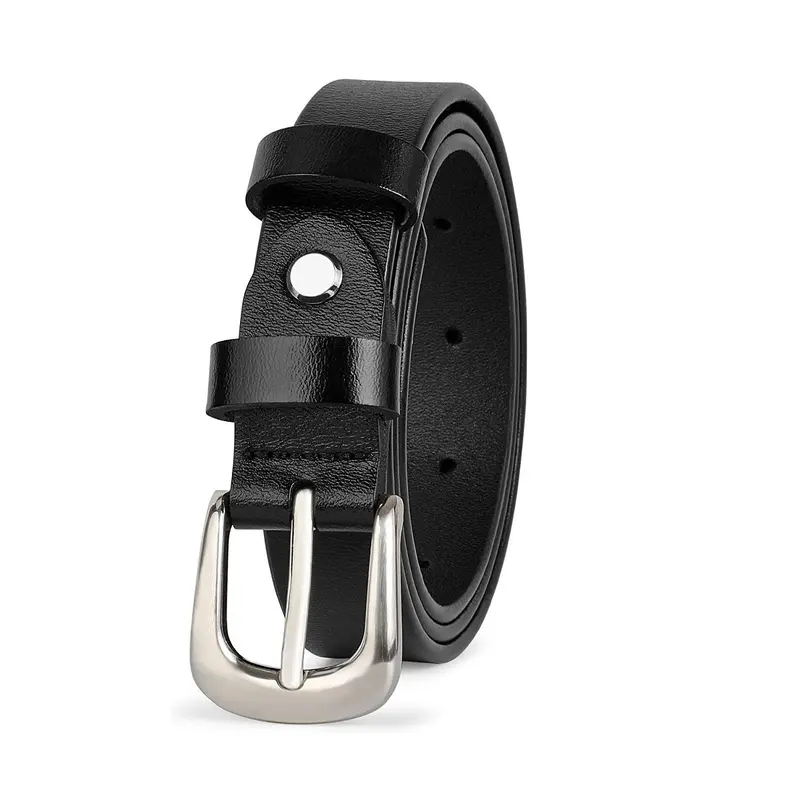Choosing kids’ belts for all ages involves considering the specific needs and preferences of children at different developmental stages. Here’s a comprehensive buying guide to help you select the right belt for kids of all ages:
1. Infants and Toddlers (0-3 Years):
- For very young children, focus on ease of use and comfort. Look for elastic or adjustable belts with simple snap or hook-and-loop closures. These belts should be gentle on delicate skin.
2. Preschoolers (3-5 Years):
- Preschoolers may be ready for belts with small buckles, but choose ones that are easy to fasten and unfasten. Opt for playful and colorful designs featuring characters, animals, or patterns that resonate with their interests.
3. Early School-Age (6-8 Years):
- At this stage, children are more independent and may be ready for traditional belt buckles. Choose belts that are adjustable and have safety features to prevent pinching. Look for age-appropriate designs they’ll love.
4. Tweens (9-12 Years):
- Tweens are developing their personal style. Encourage them to choose belts that reflect their interests and hobbies. Consider belts with fun but slightly more mature designs to suit their growing preferences.
5. Teenagers (13+ Years):
- Teenagers have a more developed sense of style. Allow them to express their individuality by selecting belts with fashionable designs, colors, or even subtle patterns that complement their outfits.
6. Size and Fit:
- Ensure the belt is the right size for your child’s waist. Measure their waist size and consider adjustable belts that can accommodate growth. A good fit is essential for comfort and functionality.
7. Material:
- Choose a material that suits your child’s needs. Leather belts are durable and versatile, while fabric or canvas belts are lightweight and comfortable. Consider the material’s durability and care requirements.
8. Safety Features:
- Look for belts with safety features such as easy-to-use and pinch-resistant buckles, especially for younger children. Safety should be a top priority.
9. Easy Maintenance:
- Consider the ease of maintenance. Kids can be messy, so choose belts that are easy to clean or machine washable for convenience.
10. Comfort: – Ensure the belt is comfortable to wear. It should not pinch or dig into your child’s skin. Look for belts with smooth edges and soft materials.
11. Independence: – Select belts that encourage your child’s independence. Easy-to-fasten buckles and adjustable designs allow children to manage their belts on their own.
12. Uniform Compliance: – If your child’s school has uniform requirements, choose a belt that complies with the dress code. Verify any specific guidelines regarding belt color or design.
13. Durability: – Kids can be tough on their clothing. Choose a durable belt with quality stitching and materials that can withstand wear and tear.
14. Style and Design: – Let your child’s personality shine through by involving them in the design selection. Belts should be fun, age-appropriate, and reflective of their interests.
15. Occasion-Specific Belts: – Have belts for different occasions. Consider playful and colorful belts for everyday wear and more formal or subtle belts for special occasions.
16. Personalization: – Some belts can be personalized with your child’s name or initials. This adds a personal touch and can help identify their belt easily.
By considering the age, preferences, and needs of your child, you can select the perfect belt that not only keeps their pants in place but also adds a fun and stylish element to their wardrobe. A well-chosen kids’ belt can make dressing up a delightful and empowering experience for children of all ages.


